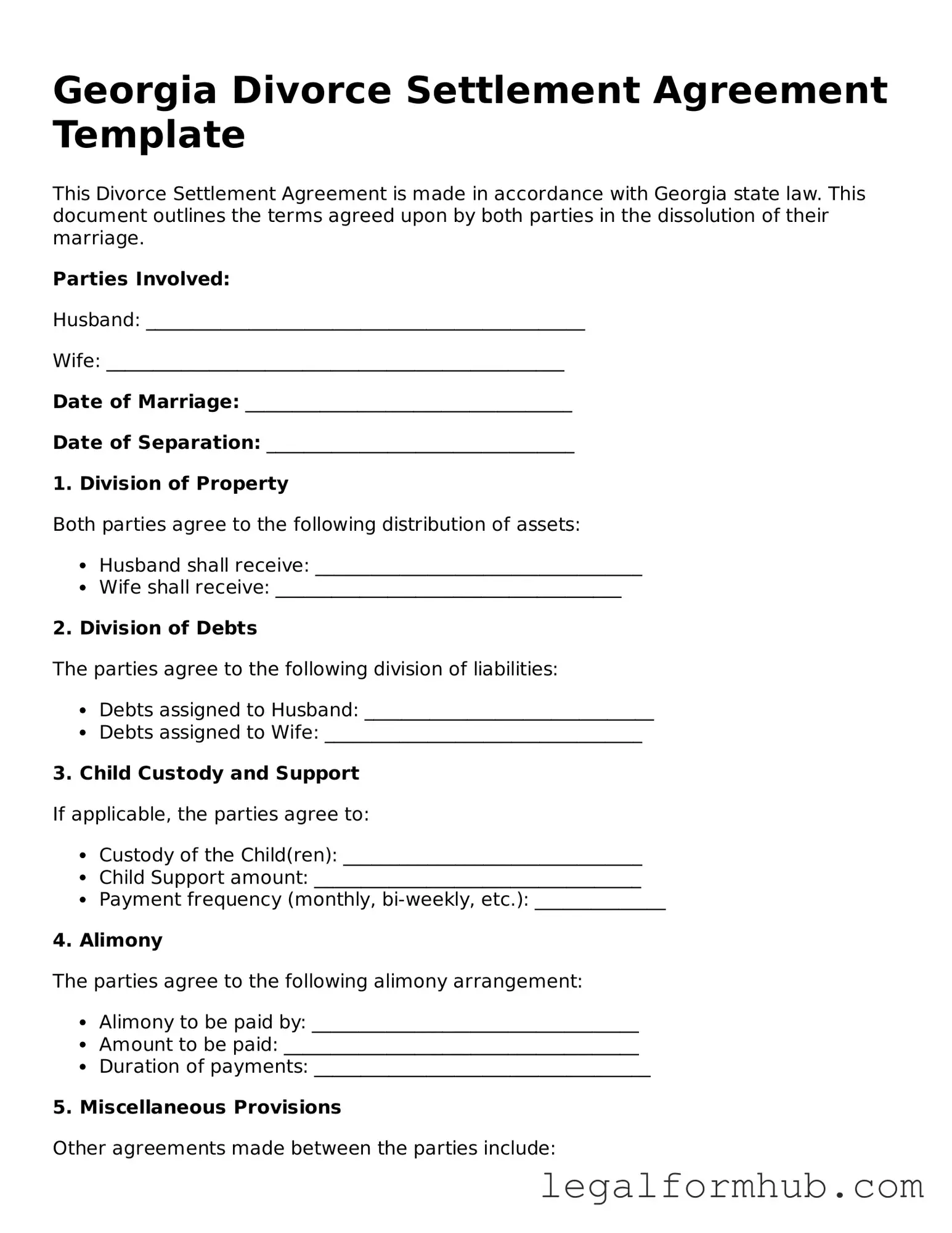The Georgia Parenting Plan is similar to the Divorce Settlement Agreement because it outlines how parents will share responsibilities for their children after a divorce. This document details custody arrangements, visitation schedules, and decision-making authority. Both agreements aim to prioritize the well-being of children while providing clarity and structure for parents.
The Marital Settlement Agreement is another document that shares similarities with the Divorce Settlement Agreement. It outlines how a couple will divide their assets and debts during the divorce process. Like the Divorce Settlement Agreement, it serves to finalize the terms of the divorce, ensuring that both parties understand their rights and obligations regarding property and finances.
The Child Support Agreement is closely related to the Divorce Settlement Agreement. It specifically addresses financial support for children following a divorce. This document details the amount of support, payment frequency, and any adjustments that may occur over time. Both documents focus on the financial aspects of a divorce while ensuring that children's needs are met.
The Alimony Agreement is another key document that aligns with the Divorce Settlement Agreement. This agreement specifies whether one spouse will provide financial support to the other after the divorce. It outlines the amount, duration, and conditions for alimony payments, helping to provide financial stability for the receiving spouse during the transition period.
The Property Settlement Agreement also resembles the Divorce Settlement Agreement in its focus on asset division. This document specifically outlines how property, including real estate and personal belongings, will be divided between the spouses. Both agreements aim to provide a clear understanding of ownership and responsibilities related to shared property.
The Financial Affidavit is a document that complements the Divorce Settlement Agreement by providing a comprehensive overview of each spouse's financial situation. This affidavit includes income, expenses, assets, and debts, helping to inform decisions about alimony, child support, and property division. Transparency in finances is crucial for a fair settlement.
The Joint Tax Return Agreement is another document that may be relevant in a divorce context. It outlines how the couple will handle tax obligations and potential refunds for the year of separation or divorce. This agreement can impact financial decisions made in the Divorce Settlement Agreement, particularly regarding asset division and support payments.
The Mediation Agreement can also be compared to the Divorce Settlement Agreement. This document is created when a couple participates in mediation to resolve their divorce issues. It summarizes the agreements reached during mediation, which may include child custody, support, and property division. Both documents aim to provide a clear resolution to divorce-related disputes.
For those interested in understanding the specifics of a trailer transaction, an informative resource is available: the comprehensive guide to the Illinois Trailer Bill of Sale. This guide details the steps necessary for completing your sale and ensuring a smooth transfer of ownership.
Finally, the Court Order is a legal document issued by a judge that formalizes the terms of the Divorce Settlement Agreement. Once approved by the court, it becomes enforceable. This document ensures that both parties adhere to the agreed-upon terms, making it a crucial component of the divorce process.
